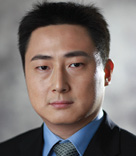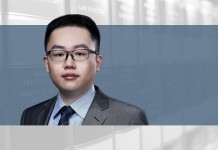On 6 February, the Supreme People’s Court issued its fourth set of guiding cases. Among them, Guiding Case No. 15 – “Sales contract dispute case, XCMG Construction Machinery v Chengdu Chuanjiao Industry & Trade et al” – indicates that where there is mixing in terms of personnel, business, financial affairs, etc. among affiliates, all of the affiliates will bear joint and several liability for the external debt of one or more them.

Vincent Mu
胡光律师事务所
律师
Associate
Martin Hu & Partners
The system of guiding cases began in 2010. Pursuant to article 7 of the Notice on the Provisions for Case Guidance Work (Fa Fa [2010]), when a People’s Court at any level tries a case similar to a guiding case issued by the Supreme People’s Court, it is required “to make reference” to it.
Based on this, Case No. 15 will set the train of thought in future trials of similar disputes.
Facts of the case
The basic facts of Case No. 15 are as follows: failing to punctually pay an amount owed to XCMG Construction Machinery, Chengdu Chuanjiao Industry & Trade had a legal action instituted against it. Originally, this was a case in which the claim-debt relationship was simple and clear. The difference lay in XCMG’s allegation that there was mixing in terms of personnel, business and financial affairs of Chuanjiao Industry & Trade and its affiliates, Chengdu Chuanjiao Construction Machinery and Sichuan Ruilu Construction, and as a result it claimed that Ruilu, Chuanjiao Industry & Trade, the joint actual controller of the three companies and the individual shareholders of the three companies bore joint and several liability for the debts of Chuanjiao Industry & Trade.
XCMG adduced evidence showing that: the actual controller of Chuanjiao Industry & Trade, Chuanjiao Machinery and Ruilu was the same natural person; the natural person shareholders of two of the companies were the same persons (including the joint actual controller of the three companies), and 90% of the equity of one of the companies was held by the spouse of the joint actual controller; the manager of the three companies was their joint actual controller, and their financial controllers, accountants and officers responsible for the handling of industry and commerce procedures were the same, and there were cross-appointments among other management positions; the scopes of business of the three companies were essentially the same; when carrying out recruitment and business activities, the three companies did so without separating their respective identities, using the same contact information and model contracts; and the three companies jointly settled accounts and mutually undertook each other’s claims and debts.
Based on the above facts, the court at first instance rendered a judgment finding that Chuanjiao Machinery and Ruilu bore joint and several liability for the debt of Chuanjiao Industry & Trade, but dismissed the claim that the joint actual controller and the individual shareholders bore joint and several liability. In its judgment, the appeals court upheld the judgment at first instance.
Positive significance
The positive significance of Case No. 15 lies in its expansion of the means of relief available to creditors in civil and commercial transactions. Previously, when a company directly involved in a transaction was insolvent, the creditor’s sole option was to “pierce the corporate veil” on the basis of the third paragraph of article 20 of the Company Law and claim the debt against the company’s shareholders.
However, if the company shareholders were not in direct possession of resources, having concealed them in other affiliates under their control, the creditor was basically left without recourse. That is to say, current law only permits creditors vertical, “company-shareholder”, debt recovery, and does not support horizontal, between affiliates, debt recovery. Case No. 15 offers creditors more comprehensive, three-dimensional protection.
Concerns
First, current PRC legislation does not provide for the denial of the independent legal status of affiliates, meaning that Case No. 15 suffers from the obvious flaw of a “judgment without basis”.
The quasi-juridical nature of Case No. 15 facilitates the work of judges, but given that this is only conclusion substituting for basis, it does not resolve the existing flaw in similar judgments and rulings. Second, Case No. 15, through application mutatis mutandis of the third paragraph of article 20 of the Company Law, provides for the same legal consequences for “triple mixing” (namely mixing of personnel, business and financial affairs) among affiliates as for the abuse of the independent status of a company or limited liability by shareholders to evade debts.
However, it does not hold that the “three mixings” directly trigger shareholder liability (accordingly, resulting in the dismissal of the plaintiff’s claim that the joint actual controller and individual shareholders bore joint and several liability).
This not only makes it impossible for Case No. 15 and the third paragraph of article 20 of the Company Law to maximally converge in protecting creditors, but will also certainly trigger arguments over the relationship between the “three mixings” and the evasion of debts by shareholders abusing the independent status of companies or limited liability.
Third, Case No. 15 does not mention such acts as the illegal withdrawing of capital, the hollowing out of a company, etc., that clearly violate the principle of good faith.
Does this imply that, regardless of whether a shareholder or the actual controller did not deliberately reduce the capital adequacy of a certain affiliate, so long as there exists the “three mixings” among affiliates, a creditor may select at its discretion to claim against the plumpest of the affiliates? If this indeed is the original intent of Case No. 15, does this not fuel suspicion of excessive protection, and damage the independence of legal persons?
We will continue to keep a close eye on this issue and inform readers of the newest developments.
胡光律师事务所
上海市芳甸路1155号浦东嘉里城办公楼8楼
8/ Floor, Kerry Parkside Office
1155 Fangdian Road, Pudong
Shanghai, China
邮编 Postal code: 201204
电话 Tel: +86 21 5010 1666
传真 Fax: +86 21 5010 1222
www.mhplawyer.com
胡光 Martin Hu
电子信箱 E-mail: martin.hu@mhplawyer.com
牟笛 Vincent Mu
电子信箱 E-mail: vincent.mu@mhplawyer.com






















